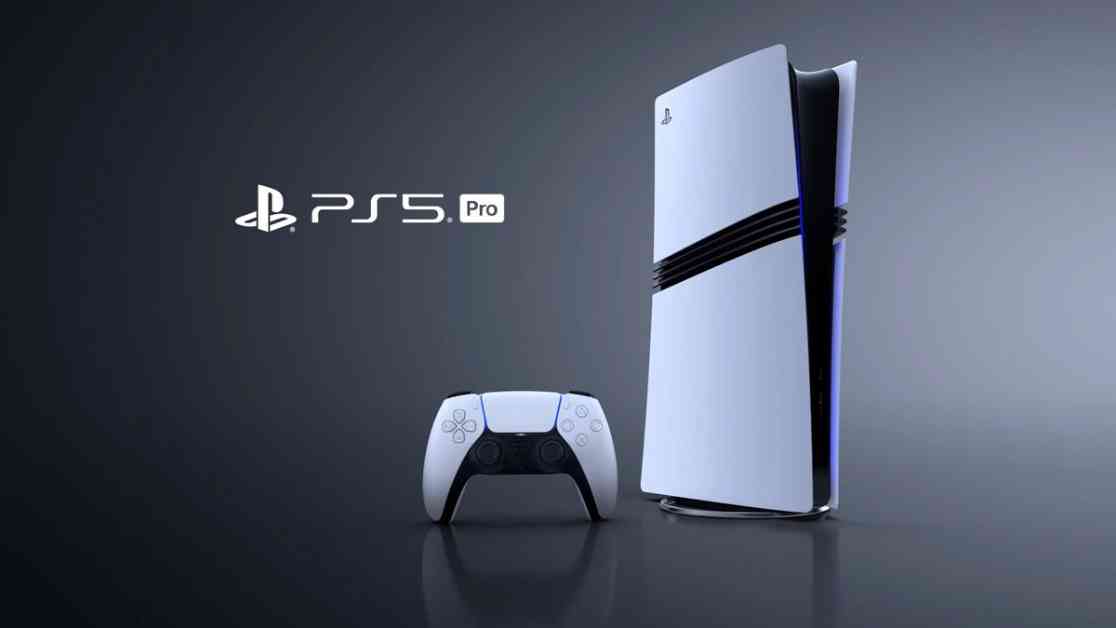Sony’s highly anticipated PS5 Pro console has recently been confirmed to feature cutting-edge ray-tracing technology, setting the stage for a new era of gaming immersion and visual fidelity. The revelation came during the PS5 Pro Technical Presentation hosted by Mark Cerny, where the PlayStation head honcho shed light on the console’s innovative hardware and performance capabilities.
Pushing the Boundaries of Ray-Tracing Technology
From a PC gaming perspective, the standout feature of the PS5 Pro is undoubtedly its ray-tracing hardware and performance. Rumors had been swirling that the PS5 Pro might incorporate AMD’s upcoming RDNA 4 GPU architecture, and now it has been officially confirmed by Sony that the console will indeed leverage RT hardware from AMD’s roadmap. What’s even more intriguing is that Sony played a pivotal role in motivating AMD to develop this advanced ray-tracing technology.
According to Mark Cerny, the PS5 Pro utilizes the latest ray-tracing feature sets created by AMD as the next step in their architectural roadmap. Cerny stated in an interview with CNET that the collaboration with AMD has been instrumental in pushing the boundaries of ray-tracing technology. He expressed his satisfaction with the response from developers, who have been overwhelmingly positive about the capabilities of the PS5 Pro’s RT hardware.
However, there is some skepticism surrounding the idea that Sony solely influenced AMD’s development of new RT hardware. Critics argue that AMD likely had plans for advanced ray-tracing technology in its roadmap prior to Sony’s involvement. Nonetheless, the implications of this collaboration are significant, especially in terms of the ray-tracing performance of AMD’s upcoming RDNA 4 GPUs.
Unveiling Impressive Ray-Tracing Performance
One of the key highlights of the PS5 Pro is its remarkable ray-tracing performance, which Sony claims to be 2-3 times superior to that of the standard PS5. This impressive leap in RT capabilities is attributed to the PS5 Pro’s increased graphics compute units, which are 1.67 times more than those of the PS5. When combined with the advancements in AMD’s RDNA architecture, the PS5 Pro achieves a substantial boost in raw RT performance.
Moreover, AMD’s projected 1.5x improvement in ray-tracing performance from RDNA 2 to RDNA 3 further reinforces the PS5 Pro’s enhanced capabilities. By leveraging RDNA 3-style RT hardware along with additional functional units, the PS5 Pro is able to achieve a significant performance upgrade that aligns with Sony’s claims.
While the numbers paint a promising picture of the PS5 Pro’s ray-tracing capabilities, some critics remain cautious about AMD’s next-gen RT hardware. The comparison with Nvidia and Intel’s RT features suggests that the PS5 Pro may not offer the same level of hardware acceleration for ray-tracing as its competitors. This could potentially impact the console’s performance in comparison to Nvidia’s offerings.
Looking Ahead to AMD’s RDNA 4 GPUs
As the gaming industry eagerly awaits the arrival of AMD’s RDNA 4 GPUs, the question arises of whether these new graphics cards will bridge the ray-tracing gap with Nvidia. Sony’s unveiling of the PS5 Pro’s RT technology hints at a potential shortfall in AMD’s upcoming GPUs compared to Nvidia’s established RT capabilities.
Speculations suggest that AMD’s RDNA 4 GPUs may not fully close the ray-tracing performance divide with Nvidia, marking a potential disappointment for gamers seeking top-tier ray-tracing experiences. Despite being AMD’s third-generation GPUs with RT support, the RDNA 4 lineup may fall short of matching Nvidia’s advancements in ray-tracing technology.
In conclusion, the confirmation of the PS5 Pro’s next-gen ray-tracing technology marks a significant milestone in the evolution of gaming consoles. While Sony’s collaboration with AMD has led to impressive advancements in RT performance, the competitive landscape with Nvidia remains a key point of comparison. As gamers anticipate the release of the PS5 Pro and AMD’s RDNA 4 GPUs, the future of ray-tracing technology in gaming consoles is poised for exciting developments.
















